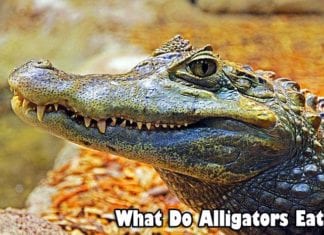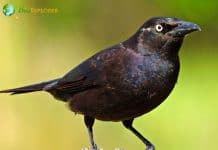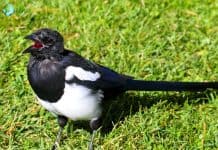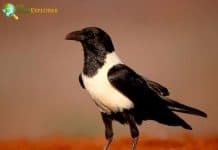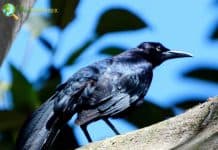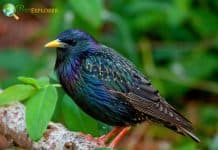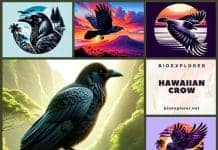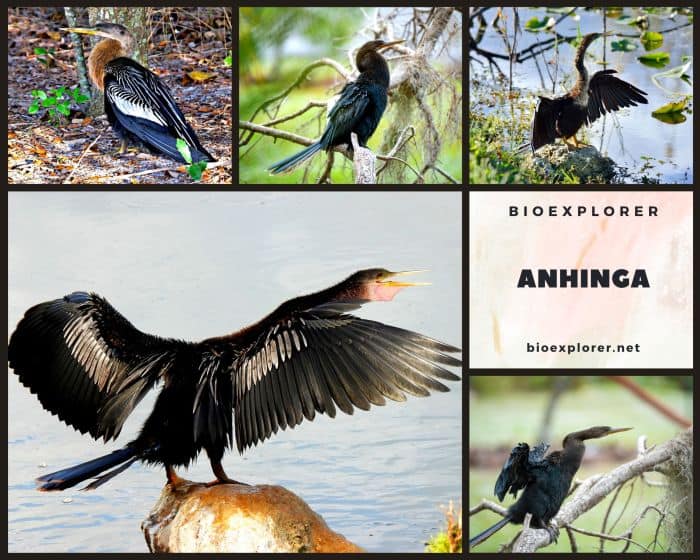
| Animalia | Aves | Suliformes | Anhingidae | Chordata | Anhinga anhinga |
Only a head that resembles a snake may be seen above the water, while a dark body swims covertly through the lake. The creature that sounds like the Loch Ness monster is an anhinga. This black waterbird stabs fish with its dagger-like beak while swimming underwater. They love to dwell close to the forested edges of lakes and ponds.
Table of Contents
Anhinga Physical Characteristics
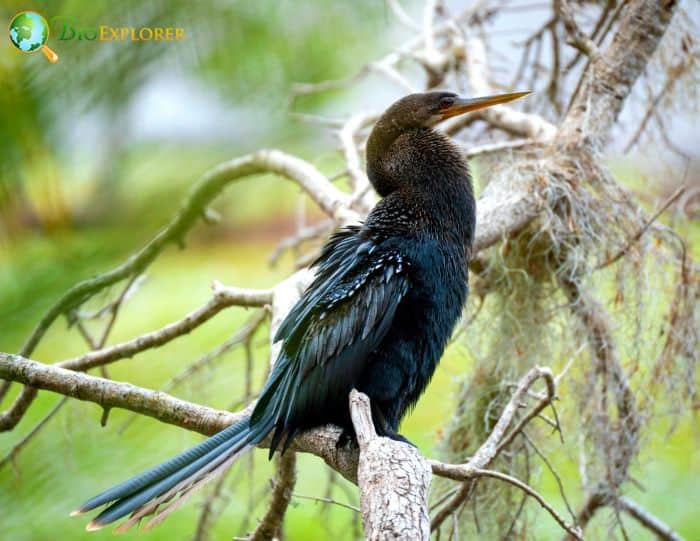
Anhingas, also known as snakebirds or darters, possess distinctive physical characteristics and behaviors. Here are the key features of anhingas:
Appearance:
- Long Tails: Anhingas have long tails that resemble the shape of a turkey’s tail.
- Dagger-like Bill and S-shaped Neck: They have a pointed, dagger-like bill and a long, S-shaped neck[1].
- Flattened Body: When in flight, anhingas have a flattened appearance.
- Plumage: Adult males have black backs and wings with silvery to white streaks. Females and immature birds have light tan heads, necks, and breasts.
- Coloration: Legs, feet, and bills are yellowish-orange in color.
Differentiation from Cormorants:
- Tail and Bill: Anhingas have wider and longer tails compared to cormorants. Their bills are pointed, while Cormorants have hook-tip bills.
- Size: Anhingas are larger than cormorants, with a bill length measuring about twice the length of their head.
Unique Fishing Method:
- Swimming and Pursuing Prey: Anhingas are excellent swimmers and rely on their webbed feet to propel themselves underwater. They pursue their prey while submerged.
- Spearing Prey: Anhingas catch fish by rapidly stretching their necks and spearing their prey.
- Handling and Swallowing: After catching fish, they bring them to the surface, handle them, and swallow them whole.
Absence of Uropygial Gland:
- Unlike other waterbirds such as ducks, ospreys, and pelicans, anhingas do not possess a uropygial gland. They do not coat their feathers with oil.
These characteristics and behaviors distinguish anhingas from other birds and contribute to their unique identity in the avian world.
Anhinga has strange names
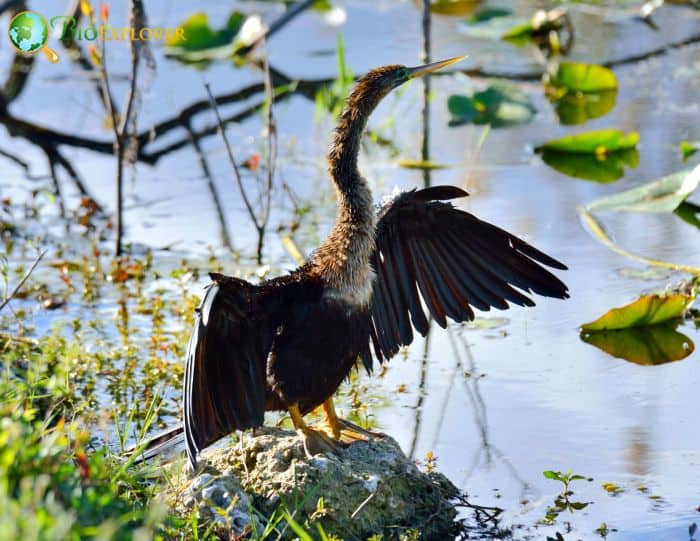
Because of its unusual design, the Anhinga has been named “water turkey” for its tail and “snake bird” for its long neck resembling a snake when it moves through the water.
Anhinga – a waterbird without waterproof feathers
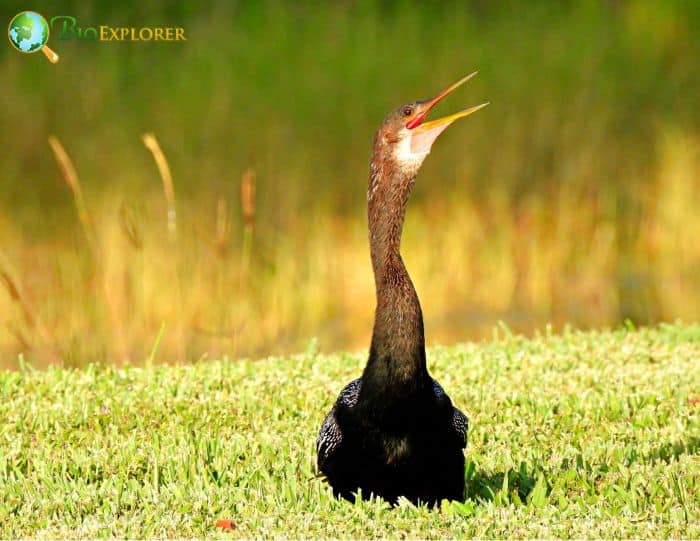
The Anhinga lacks waterproof feathers, unlike most waterbirds. Although that might seem like a drawback for their aquatic existence, their substantial bones, and damp feathers enable them to slowly dunk their bodies under the water while discreetly stalking fish.
Anhinga – The Tupi Indians named it
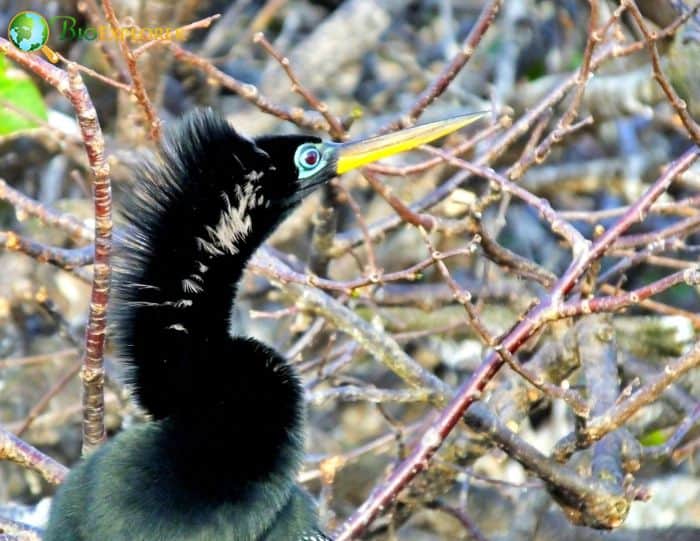
The Tupi Indians of Brazil gave the animal the name Anhinga, which they translated as “devil bird” or “evil spirit of the woods. “
Anhinga – The Sky is the limit
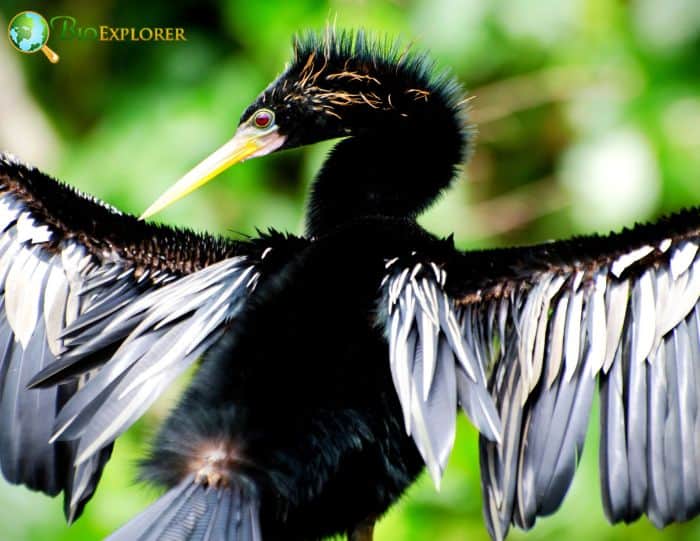
They soar remarkably effectively for a water bird. They are regularly spotted doing so at considerable heights while sporting a striking cross-shaped silhouette.
Anhingas are less buoyant than other swimming birdsAnhingas are less buoyant than other common swimming birds like grebes or puffins. This improves the birds’ diving abilities by pursuing water prey like fish, insects, crawfish, and other tasty treats.
What Do Anhingas Eat?
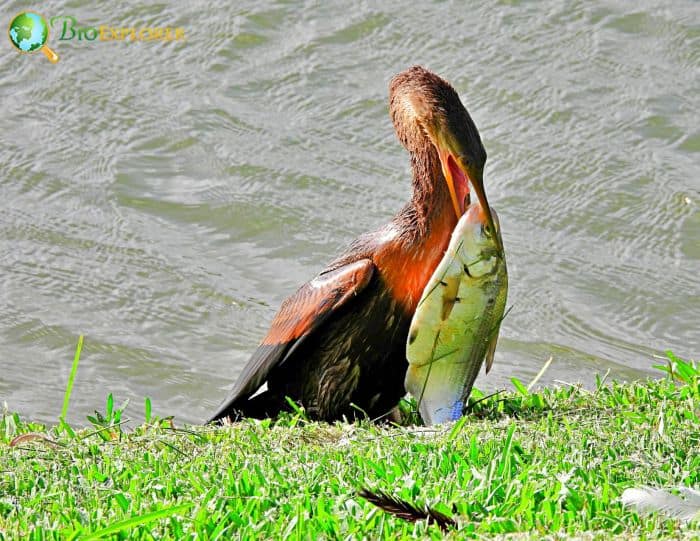
The Anhinga diet includes[¶]:
- Agar River Prawn (Macrobrachium jelskii).
- Livebearers (Poeciliidae)
- Mojarra Manchada (Lepomis punctatus).
- Blue-Fintop Minnow (Lucania goodei).
- Goldspotted Killifish (Floridichthys carpio).
- Chordates (Chordata)
- Common Sunfishes (Lepomis)
- Sailfin Molly (Poecilia latipinna).
- Planta (Plantae)
- Guayacón Mosquito (Gambusia affinis).
- Achigans Et Crapets (Centrarchidae).
- American Flagfish (Jordanella floridae).
- Animal (Animalia)
- Marsh Killifish (Fundulus confluentus).
- Bluegill (Lepomis macrochirus)
- Sargo Chopa (Archosargus probatocephalus).
- Brown Hoplo (Hoplosternum littorale).
- Mayan Cichlid (Mayaheros urophthalmus).
- Golden Topminnow (Fundulus chrysotus).
- Mozambique Mouth-Breeder (Oreochromis mossambicus).
- Jaguar Guapote (Parachromis managuensis).
- Cichlidés (Cichlidae)
- Mojarra Oreja Roja (Lepomis microlophus).
- Black Crappie (Pomoxis nigromaculatus).
- Blue Tilapia (Oreochromis aureus).
- Poisson Épineux (Actinopterygii)
- Crapet Sac-À-Lait (Lepomis gulosus).
- Nile Mouthbreeder (Oreochromis niloticus).
- Petaca Rayada (Abudefduf saxatilis).
- Blue Tilapias (Oreochromis)
What Eats Anhingas?
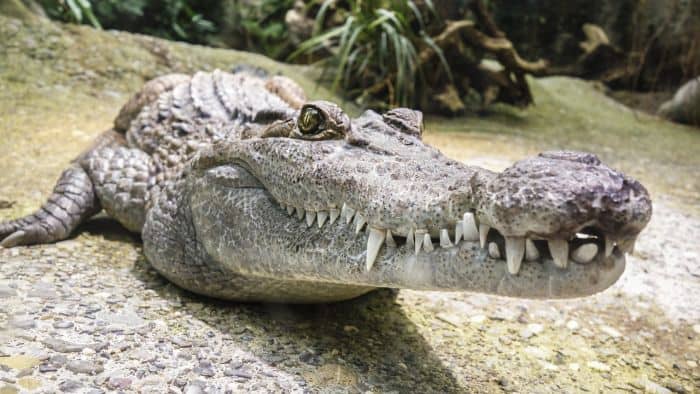
Aligator Americano (Alligator mississippiensis) eat Anhinga[§].


